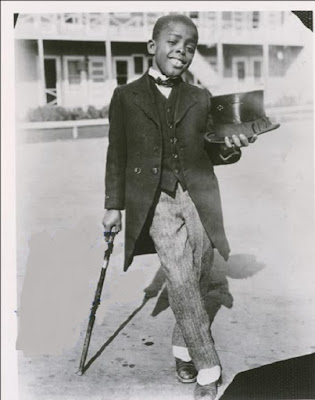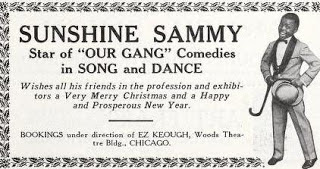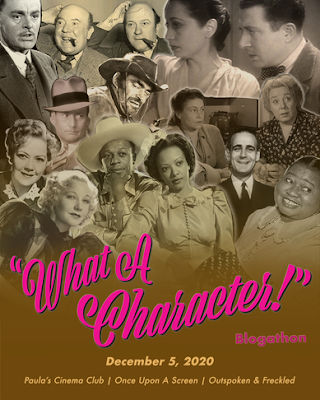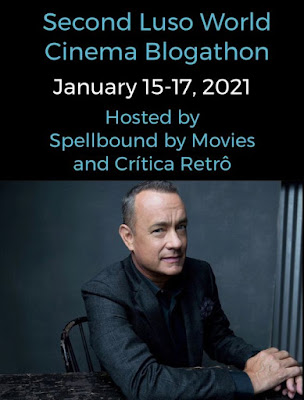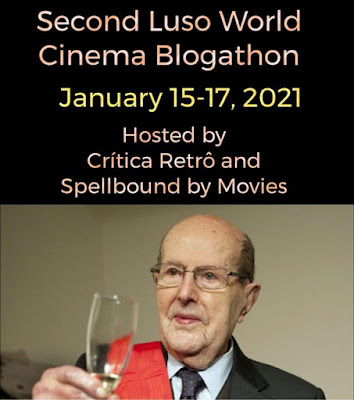Você deve conhecer Cole Porter, Ira e George Gershiwn, George M. Cohan, Irving Berlin e Jerome Kern. Talvez você não conheça Bert Kalmar e Harry Ruby, mas com certeza já ouviu as canções deles, como por exemplo “I Wanna Be Loved by You”. Kalmar e Ruby não foram os artistas mais famosos oriundos da Tin Pan Alley, região de Manhattan que concentrava os principais selos de música no começo do século XX, mas a dupla provou que merecia uma cinebiografia, que veio em 1950 com “Três Palavrinhas”.
You might be familiar with Cole Porter, Ira and George Gershwin, George M. Cohan, Irving Berlin and Jerome Kern. You might not know Bert Kalmar and Harry Ruby, but you certainly have heard their songs, such as “I Wanna Be Loved By You”. Kalmar and Ruby were not the most famous artists to emerge from the Tin Pan Alley, a region of Manhattan that concentrated the main music publishers of the early 20th century, but the duo proved to be worthy of a biopic, that came as 1950's “Three Little Words”.
Os dois se esbarram pela primeira vez em um incidente. Bert Kalmar (Fred Astaire) é um bem-sucedido dançarino no vaudeville, fazendo par com Jessie Brown (Vera-Ellen). Jessie quer se casar com Bert, mas ele está mais interessado em se tornar um mágico. Quando ele tenta fazer alguns truques de mágica no palco, o pianista Harry Ruby (Red Skelton) é enviado para ser assistente de Bert, e o número acaba com uma confusão hilariante envolvendo coelhos numa cartola e um ganso descontrolado.
They meet for the first time in an unfortunate incident. Bert Kalmar (Fred Astaire) is a successful vaudeville dancer, making a dancing duo with Jessie Brown (Vera-Ellen). Jessie wants to marry Bert, but he is more interested in becoming a magician. When he tries to do a few magic tricks on the stage, pianist Harry Ruby (Red Skelton) is sent to work as Bert's assistant, and the number ends up in a hilarious mess involving rabbits in a top hat and a vicious goose.
Os caminhos deles se cruzam novamente. Desta vez, Bert machucou o joelho e não pode dançar durante um ano. Harry está tentando a sorte como compositor e liricista. Eles se encontram no escritório de um agente e Bert ajuda Harry a escrever uma letra melhor para uma melodia. Entretanto, quando Bert reconhece Harry do incidente no show de mágica, ele fica furioso e vai embora. Mesmo assim, Harry publica a música que eles fizeram juntos, forçando Bert a começar uma parceria, pois a música faz grande sucesso.
Their paths cross a second time. This time, Bert has injured his knee and can't dance for a year. Harry is trying his luck as a composer and songwriter. They meet at an agent's office and Bert helps Harry to write better lyrics for his tune. However, when Bert recognizes Harry from the magic show incident, he gets mad and leaves. Nevertheless, Harry publishes the song they made together, forcing Bert to start a partnership as the song becomes a hit.
Esta parceria, obviamente, teve seus problemas. Assim como Bert implica com o amor de Harry pelo beisebol, Harry não gosta do interesse de Bert em mágica. Com as melhores intenções, eles interferem na vida pessoal um do outro. Há brigas, reencontros e silêncios constrangedores. Tudo isso era ficção, para deixar o filme mais interessante, porque Kalmar e Ruby, na vida real, se davam muito bem.
This partnership, of course, isn't one without a few problems. As Bert complains about Harry's love of baseball, Harry doesn't like Bert's interest in magic. With the best intentions, they interfere in each other's personal businesses. There are arguments, reunions and awkward silences. All of this was fiction, to make the film more interesting, as the real Kalmar and Ruby got along very well.
No começo da carreira no vaudeville, Fred Astaire conheceu Kalmar e Ruby. Sobre Bert Kalmar e Jessie Brown, Astaire disse: “Nós [Fred e a irmã Adele Astaire] costumávamos ficar nas coxias e ver Jessie e Bert com animação e inveja, nos perguntando se poderíamos igualar a elegância deles e chegar ao mesmo status que eles tinham”. Estas memórias podem tê-lo influenciado a declarar que “Três Palavrinhas” foi um dos filmes que mais gostou de fazer em Hollywood. Astaire ganhou o Globo de Ouro de Melhor Ator em Filme de Comédia ou Musical, no ano em que a categoria foi criada.
In his early years in vaudeville, Fred Astaire knew Kalmar and Ruby. About Bert Kalmar and Jessie Brown, Astaire said: "We [Fred and his sister Adele Astaire] used to stand in the wings and watch Jessie and Bert with thrilled envy, wondering if we could equal their finesse and reach their headline billing". These memories may have influenced him to declare that “Three Little Words” was among his favorite experiences in Hollywood. Astaire won the Golden Globe for Best Actor in a Motion Picture Musical or Comedy for this film, in the year the category was created.
“Três Palavrinhas” é o primeiro de dois filmes que Vera-Ellen fez com Fred Astaire. Com ou sem Astaire como parceiro de dança, Vera-Ellen brilha no filme. Ela prova que é tão capaz quanto Astaire quando eles dividem a cena, e sozinha ela mostra charme e vitalidade. Muito subestimada, Vera-Ellen merece ser mencionada, junto com Cyd Charisse, como uma das melhores dançarinas da Era de Ouro dos musicais de Hollywood.
“Three Little Words” is the first of two films Vera-Ellen made with Fred Astaire. With or without Astaire as her dancing partner, Vera-Ellen shines in this film. She proves to be as capable as Astaire when they share the screen, and alone she displays charm and vitality. Often underrated, Vera-Ellen deserves to be mentioned, alongside Cyd Charisse, as one of the best dancers of Hollywood's Golden Age of musicals.
Debbie Reynolds aparece num pequeno papel como Helen Kane, e outra participação notável é Gloria DeHaven. Gloria interpreta a própria mãe, Sra Carter DeHaven – o nome verdadeiro dela era Flora Parker DeHaven –, uma estrela da Broadway que foi a primeira a cantar a canção “Who's Sorry Now” de Kalmar e Ruby. Eileen Percy, interpretada por Arlene Dahl, era atriz de cinema mudo. Helen Kane também foi uma atriz de cinema que serviu de inspiração para a personagem animada Betty Boop, e a própria Kane dublou Debbie Reynolds neste filme – isso significa que a cena que vemos tem Reynolds interpretando a atriz que a estava dublando nos bastidores!
Debbie Reynolds appears in a bit part as Helen Kane, and another interesting bit player is Gloria DeHaven. Gloria plays her own mother, Mrs. Carter DeHaven - her real name was Flora Parker DeHaven -, a Broadway star who introduced the Kalmar-Ruby song “Who's Sorry Now”. Eileen Percy, played by Arlene Dahl, was a silent film actress. Helen Kane was also a real film actress who inspired the cartoon character Betty Boop, and she even dubbed Debbie Reynolds's vocals in this movie – that means the scene is of Reynolds playing the actress that was dubbing her backstage!
I have only one problem with the film, and it's the nonetheless gorgeous costumes by Helen Rose. Although the story is set in the late 1910s, Vera-Ellen's clothes are clearly from the early 1950s, and I found that a bit distracting. A woman dancing wearing only a black leotard would have caused frisson in 1919!
“Three Little Words” reminded me of another Fred Astaire movie, “Blue Skies”, from 1946. Both films are about show business partners who are very different from each other. In “Blue Skies”, however, Astaire is a dancer while Bing Crosby plays a nightclub manager. In “Three Little Words”, Red Skelton is a nice contrast to Astaire, serving also as comic relief – because he may love baseball, but he’s really bad at it. I believe “Blue Skies” has more memorable dance routines and songs.
"Romance Inacabado" / "Blue Skies"
MGM fez tantos musicais incríveis nos anos 40 e 50 que muitos deles acabam sendo colocados de lado, ao mesmo tempo em que discutimos sempre preciosidades como “Sinfonia de Paris” (1951) e “Cantando na Chuva” (1952). “Três Palavrinhas” pode não chamar tanto a atenção porque trata de compositores não muito lembrados, mas o filme merece ser visto em especial por causa das habilidades de dança de Vera-Ellen. Em três palavrinhas: você vai gostar!
MGM made so many great musicals in the 1940s and 1950s that many of them go overlooked, while we talk too often about gems like “An American in Paris” (1951) and “Singin' in the Rain” (1952). “Three Little Words” may not be as interesting because its subjects are not so well-known, but it deserves to be seen especially because of Vera-Ellen's dancing skills. In three little words: you'll like it!










